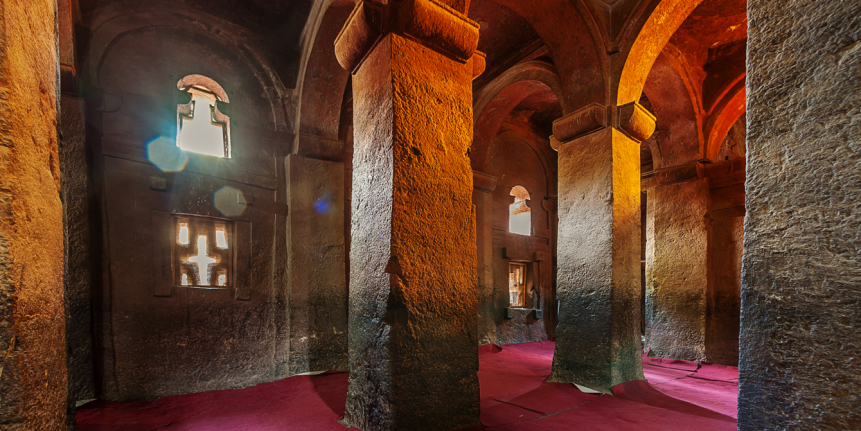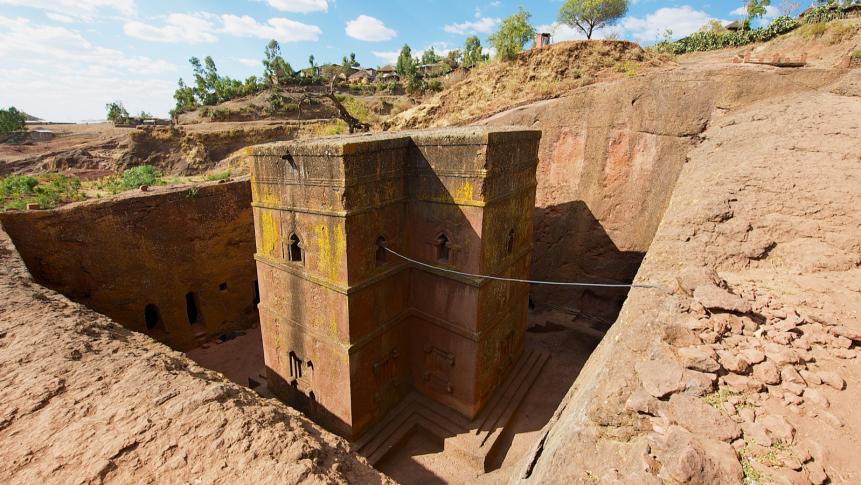The world is full of ancient stone monuments, but have you heard about the mind-blowing underground churches of Lalibela, Ethiopia?
From Stonehenge to the Pyramids to the Great Wall of China, the world is full of ancient stone monuments. To us, though, the most amazing achievements are structures built entirely from one stone. We’ve already told you about one such place, but there’s another, larger example — 11 other examples, in fact. These are the mind-blowing underground churches of Lalibela, Ethiopia.
 Rocks of Ages
Rocks of Ages
There’s some dispute between historians about if Ethiopia or Armenia was the first country to convert to Christianity, but the edge probably goes to Ethiopia, which was then called Abyssinia. Sometime around 330 C.E., Emperor Ezana embraced the religion and declared his to be a Christian nation. His decision simply followed his countrymen’s lead, while the Armenian ruler who allegedly made a similar declaration about 30 years prior had a hostile country full of would-be converts to contend with. More significantly, we can place Ezana’s conversion quite precisely in time from firsthand accounts — the Armenian version, by contrast, was only told a century or so after it happened.

All that is to say that Christianity has been in Ethiopia for a long, long, long time, so it’s probably not very surprising that some of the most mind-blowing early Christian churches were built right here. In the region called Lalibela — named after the emperor who purportedly commissioned the churches — you can find no fewer than 11 of these churches carved directly into the mountains. Emperor Lalibela wanted to build a “New Jerusalem” in his country, and these remarkable churches were the best way to do it. The largest of them, Bet Medhane Alem, is also in the record books as the largest church carved from a single monolith. Bet Golgotha houses a replica of Jesus’s tomb and of the manger where Mary gave birth, and Bet Giyorgis is perhaps the most iconic of all the churches with its singular cruciform design.
Lalibela reigned from 1181 to 1221, but the churches he (probably) built are still in use today. They attract about 100 thousand visitors per year, many of whom make the pilgrimage on foot. In other words, the emperor was successful in making his New Jerusalem. Even to people who don’t practice Ethiopian Orthodox Christianity, these monuments are a major draw, with thousands coming from all over the world to explore the above-ground structures and below-ground tunnels.
 World Heritage, World Tourism
World Heritage, World Tourism

When the UNESCO World Heritage Site program began in 1978, the rock-hewn churches of Lalibela were one of the inspirations — and one of the first 12 sites to be protected by the UN. Tourism to the country has been on the rise ever since, and in 2015, Ethiopia was named the World’s Best Tourism Destination by the European Council on Tourism and Trade. But with that increased traffic come unexpected side effects, as the structures face erosion over time and the price of admission increases. But Ethiopia isn’t just home to eight other UNESCO sites besides the churches of Lalibela; it’s also got bubbling hot springs, volcanoes with exposed lava pools, and beautiful, mountainous views. And up in those mountains? More churches.

Fewer tourists visit the country’s other rock-hewn churches, these located in the Tigray region. That might be because in order to get to them, you literally have to scale a cliff. But these are also where some of the oldest Christian churches in the world can be found. In Lalibela, 12th- and/or 13th-century laborers started from the top and worked their way down. In Tigray, the workers were using 4th-century technology, and they carved the churches into the sides of the mountain instead. If you really want to lean into your all-church tour of the country, you totally can — other iconic places of worship include Debre Birhan Selassie, a 17th-century church with a more familiar architectural style but plastered on the inside with stunningly detailed frescos. More modern churches quite literally stand out in fluorescent pinks and yellows and prove themselves worth a pilgrimage as well.








